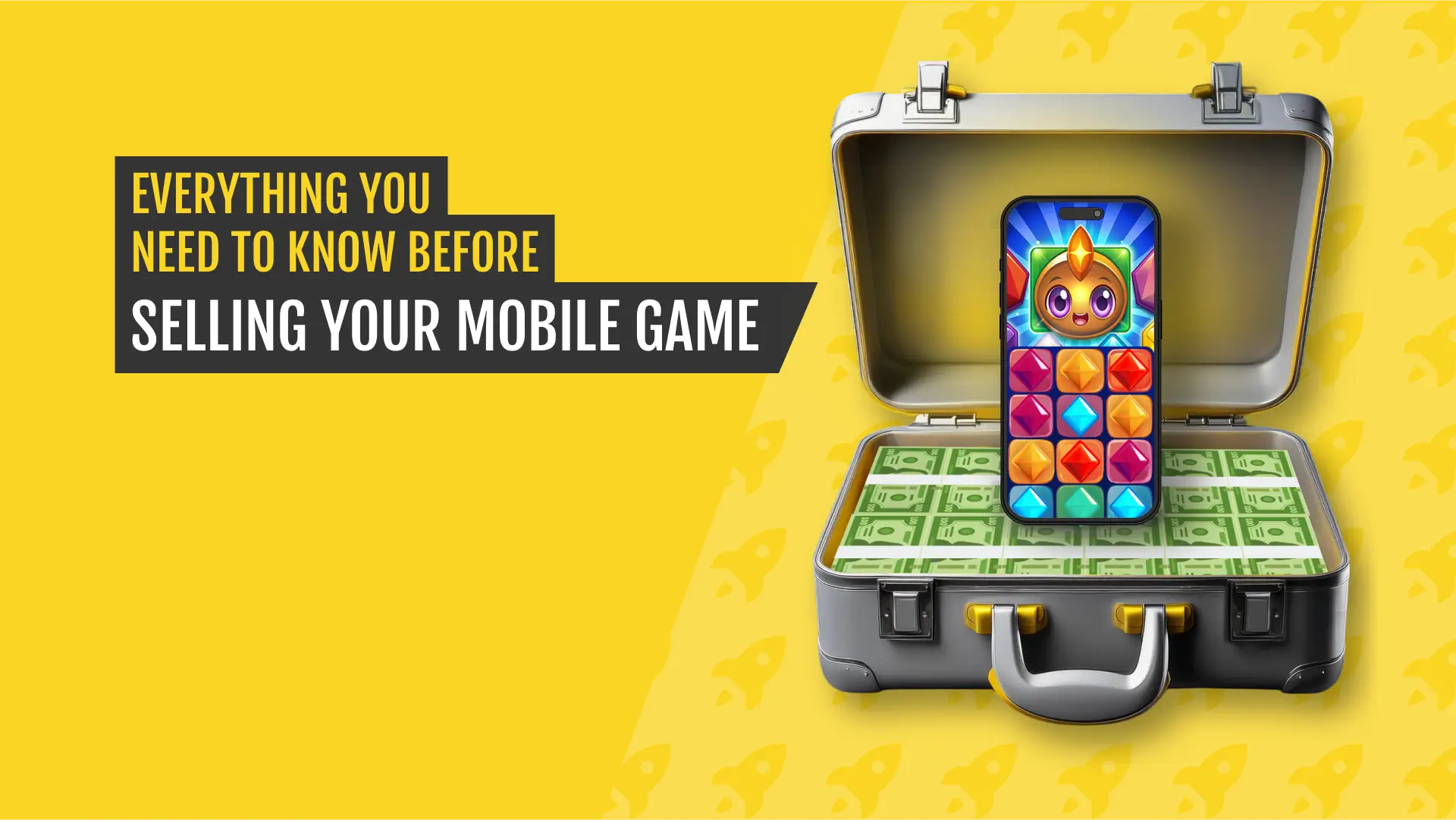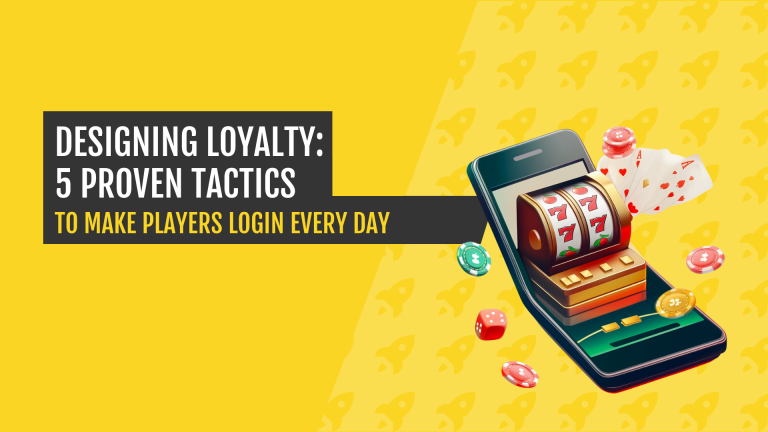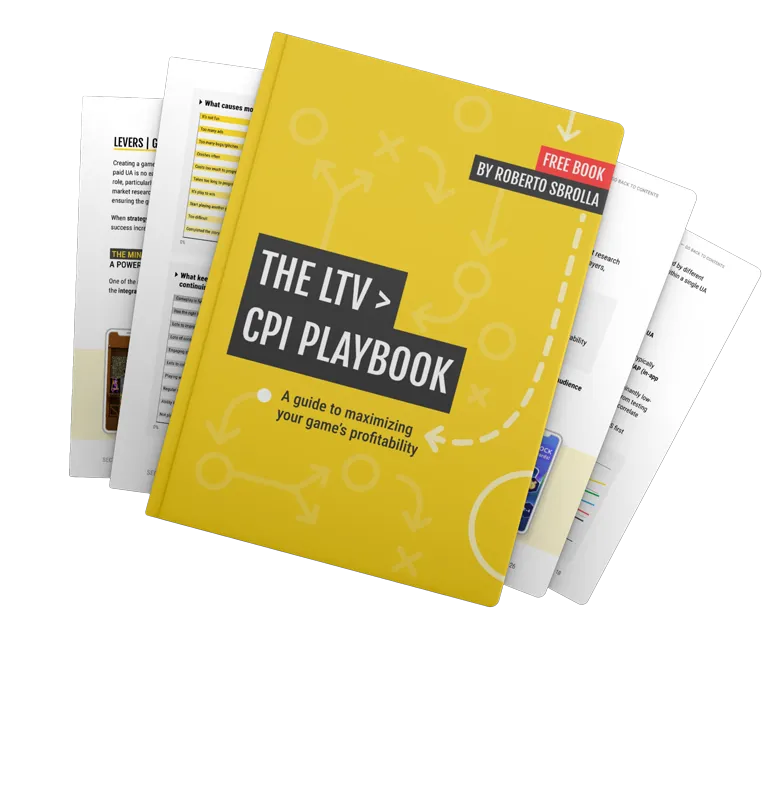If you’re thinking about selling your game, you’re likely swamped with questions. How long will it take? What’s it worth? How do you find the right buyers?
The sales process can be daunting, especially for first-timers.
To help you navigate this challenging terrain, we spoke with Orel and Eden Bleytman, the co-founders of OEB Digital. Their M&A advisory and brokerage firm recently facilitated the successful multi-million € sale of a game that AppAgent had supported for three years. During our conversation, they shared valuable insights and answered some of the most pressing questions faced by game sellers.
When Selling Your Game Makes Sense
Pursuing New Projects
One of the most common reasons developers consider selling their game is the desire to pursue a new project.
Naturally, your passion might shift to a new idea, but your current game probably demands ongoing attention. Selling allows you to channel your energy into new ventures without compromising on the quality and focus of the current project.
Raising Capital
Another solid rationale for selling your game is to raise the capital needed for future projects without the complications of raising funds from VCs.
When investors are involved, they often seek control and a share of profits. Selling your game outright, however, can provide you with a lump sum that supports your next venture, which might be a bigger opportunity than the current game.
As Orel puts it, “It’s similar to selling real estate. You don’t keep it for a lifetime; you proceed to buy more real estate or, in our case, to buy and create more apps and games. The main purpose is that people prefer to get the capital in one or two payments within a short period.”
Lacking the Resources to Scale
For developers with small teams, it’s common to hit the limit of what can be achieved with the resources at hand.
Even if you know your game has great potential to scale, your current capacities might be completely maxed out. In these cases, selling the game to a larger company with more resources can ensure its continued growth and success.
When Selling your Game Doesn’t Make Sense
Feeling Under Pressure
According to Orel and Eden, selling under pressure (whether personal or from partners who don’t get along), is a big no-no.
High-stress situations often lead to impulsive decisions, which can potentially lower the game’s market value. It’s crucial to sell because you see a strategic benefit, not just to escape a difficult situation.
Declining Metrics
A common mistake is trying to sell a game on a declining trend. Buyers are perceptive and can identify issues such as poor user retention or the game has reached its peak potential, making it more difficult to sell. It’s always best to sell when the game is stable or experiencing an upward trend. Selling during a decline not only makes the process harder but also devalues the game.
Sometimes, people attempt to sell a game because it has been neglected, leading to a dwindling user base and decreasing profits. This is not an attractive scenario for buyers. Instead of selling at this point, it’s wiser to invest in revitalizing the game to boost both profits and user engagement. This way, you can sell the game for a higher value once it has improved.
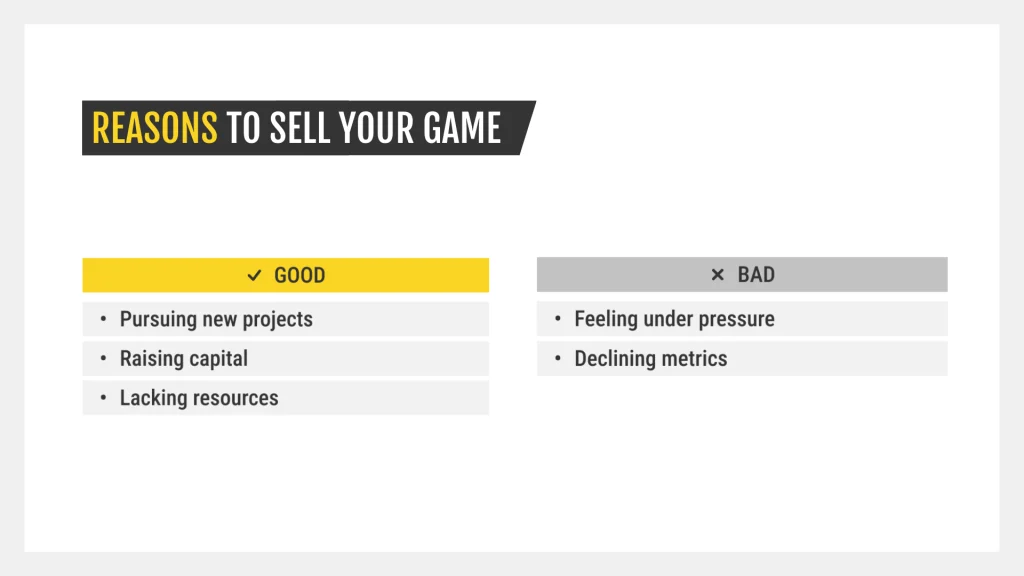
Understanding Buyer Profiles and Motivations
Buyers range from large gaming companies to investors looking for profitable additions to their portfolios. Understanding who the buyers are can help you tailor your pitch and highlight the most attractive aspects of your game.
What Matters to a Buyer
Buyers primarily focus on numbers and true growth opportunities—profit, retention, downloads from Tier 1 countries, and, for games, user sessions. Ultimately, if your numbers aren’t good, your reasons won’t hold up.
While considering all other metrics is important, metrics like ARPDAU (Average Revenue Per Daily Active Users from both in-app purchases and ads) combined with strong retention are critical. Solid analytics to support these metrics is essential for buyers’ decision-making processes.
Another important factor is the buyer’s portfolio. For example, purchasing your game makes more sense if a buyer already has similar games.
What Doesn’t Matter to a Buyer
It’s crucial to understand that buyers aren’t interested in how much time and money you invested in developing your game. Orel and Eden have had clients who invested millions, but if the metrics don’t stack up, it doesn’t matter.
Buyers focus on proven metrics and growth opportunities, not the potential you see in your game. Sometimes sellers think a game with fully organic growth is most attractive, but that’s not always the case. Without any user acquisition, buyers lack a benchmark for comparison. Ideally, a game should be about 70-80% organic to effectively demonstrate its growth potential and have a good ratio between customer acquisition cost and user lifetime value.
Why Timing of Sale Matters
So, you’ve decided to sell your game. Now the question becomes: when is the right time?
The best time to sell is when your game’s metrics are stable or, ideally, growing. A game on an upward trend is more attractive to buyers and can command a higher price.
This was the case in our collaboration with a Portuguese studio; AppAgent helped grow their casual game to the point where selling it became an excellent opportunity to self-fund a new, ambitious project.
The Sales Process
When filtering through the opportunities that land on their desk, Orel and Eden keep a few key factors in mind.
First and foremost, the game must be profitable, typically generating at least $10k per month in profit (not revenue).
The game must also be of high quality. They don’t want to waste time, so they only handle products with excellent metrics.
On average, about 70% of sellers’ requests meet their criteria. Developers who don’t meet these standards are advised to explore other ways to sell their games.

Initial Assessment
Orel and Eden always start by sending sellers two assessment forms to fill out and providing them with a free evaluation. If they determine that the game isn’t sellable through their company, they suggest alternative methods, such as reaching out to buyers directly or using other platforms.
Due Diligence
Next comes the task of due diligence, which involves verifying the game’s performance metrics, often through screenshots or direct access to platforms like App Store Connect or Google Play Console.
This step ensures the data provided by sellers is accurate and reliable. Such an assessment leads to the initial valuation and development of a prospect that is then shared with potential buyers.
Active Outreach and Buyer Engagement
When finding a potential buyer, the team engages in a lot of active outreach, connecting with both familiar and new buyers from large companies.
Keeping track of main buyers’ KPIs is essential, as business goals can shift rapidly in the mobile industry. They also make sure to regularly update their listings and proactively reach out to buyers who align with their objectives.
It’s important to note that their interactions are not limited to business developers; they often communicate directly with co-founders or CEOs, sometimes even in person or via WhatsApp. This ensures they stay engaged with the key decision-makers within each company and value is created for both parties.
It’s not just about the quantity of buyers but the quality and the relationships with them. Orel and Eden’s experience allows them to immediately identify what a specific buyer is looking for, how much they are willing to pay, and what kind of multiples they are using.
How Long Does it Take to Sell a Mobile Game?
The entire process typically takes between three to five months from start to finish. This timeframe includes the initial contact, data evaluation, signing an agreement, and finally selling the game.
While some deals can happen faster, the timeline also depends on market conditions and the seller’s urgency. If the seller is patient and adheres to their desired price, it might take a bit longer.
How the Price is Determined
Valuation is determined by various metrics, with profit being the most important. Buyers look at multiples based on the last 12 months, six months, or three months, and sometimes even the last month if the trend is stable.
Other key factors in valuation include retention, user territory, and the overall quality of the game. The bigger the game and the better its metrics, the higher the multiple it can command.
Multiples also vary depending on the niche. Hyper-casual games are harder to sell and have lower multiples, around 1.5 to 2. Casual games, on the other hand, can have multiples around 3 to 4. The average multiple across verticals is typically about 3 years of profit.
Monetization methods significantly affect the multiple as well. Games with both ads and in-app purchases tend to have higher valuations than those relying solely on ads. For apps, subscription models can command even higher multiples due to their predictable revenue streams. This trend is evident in the off-market OEB Listing Directory, where subscription apps tend to sell for more than games.
How to Increase the Valuation of your Game
Focus on retention and understand what keeps users engaged to increase your game’s revenue. Effective paid user acquisition is also crucial; while it might seem like you’re spending money, effective UA adds significant value.
Additionally, you should aim to create a high-quality product. Conduct thorough testing before monetizing and deciding to sell.
Make sure to work in an organized way from day one to ensure profitability and manage all processes properly. If needed, get professional help, especially for marketing, as having the right expertise on your team is essential.
Common Pitfalls to Avoid
When selling your game, there are several common pitfalls that can jeopardize the process and reduce your chances of a successful transaction. By being aware of these issues, you can take proactive steps to avoid them and ensure a smoother, more secure sale.
Sharing Data Prematurely
One major pitfall is sharing too much data too early without validating the buyer’s intentions.
Orel and Eden’s advice: don’t grant access to everyone, as many companies are just fishing for data and benchmarks. There are many scandals in this industry, and not all buyers are trustworthy. Anyone can pose as a genuine buyer to steal data or gain a competitive edge.
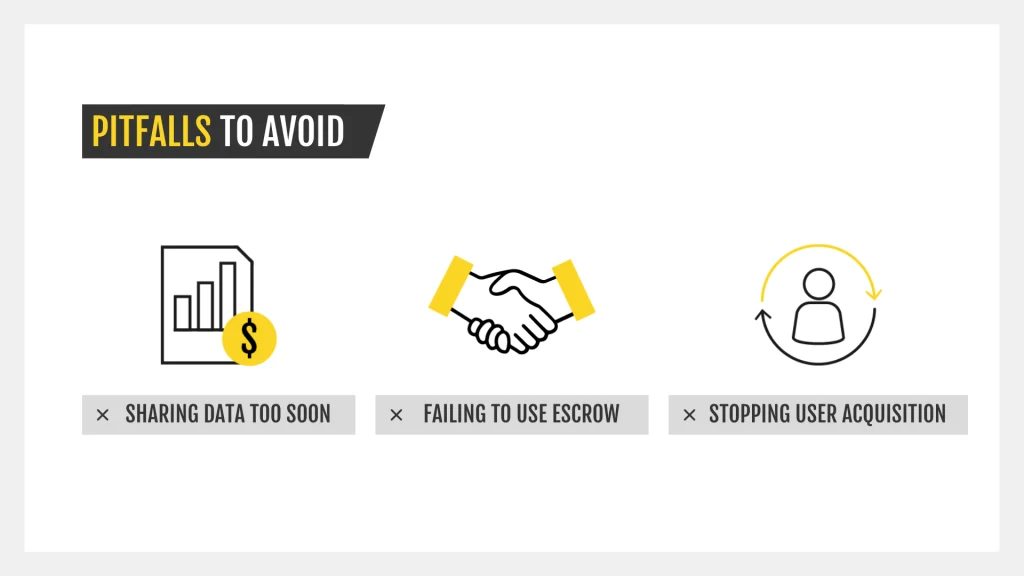
Failing to Use Secure Fund Transfers
Just as with data, transferring funds prematurely can be risky. Orel and Eden advise always using secure methods for fund transfers, such as third-party escrow services like escrow.com. This ensures a safer and more reliable transaction process.
Stopping User Acquisition
Another common mistake is stopping UA after listing the game for sale. It’s essential to maintain all metrics to keep the game attractive to buyers. Discontinuing UA efforts can negatively impact the game’s performance and decrease its appeal to potential buyers.
Making Major Changes During the Sale
Avoid testing new features or making significant changes to the game or app during the sale process, as this can disrupt the deal. You don’t know how these changes will affect your conversion funnel and decrease the game’s valuation.
Mobile Game Sale Success Stories
Orel and Eden shared one win that involved a game initially listed for $300k. The seller doubled the profit in the following month and allowed them to close the deal for $600k within two weeks.
Another success story involved a bidding war between three companies for a casual game, allowing the brokers to sell it for higher than the initial valuation. It’s important to have a broker to attract relevant companies to your game.
A broker can help you understand exactly what these companies are looking for, both in terms of metrics and mindset, including navigating ego-driven considerations. This ensures your game aligns with their interests and increases your chances of success.
Final Thoughts
Selling your mobile game is a complex process that requires strategic planning, a deep understanding of market dynamics, and a clear grasp of what buyers are looking for. From determining the right time to sell to increasing the value of your game, each step is crucial to maximizing your game’s potential and ensuring a successful sale.
Remember, it’s not just about how much time and money you’ve invested in developing your game; it’s about the tangible numbers and growth opportunities that buyers will focus on. By understanding the market, preparing your game for evaluation, and avoiding common pitfalls, you can navigate this process more smoothly and achieve a better outcome.
So, if you’re ready to take the next step and sell your mobile game, keep these tips in mind, stay patient, and focus on presenting the best possible version of your game to potential buyers.
With the right approach, you can turn your hard work into a rewarding exit and set yourself up for future success in mobile gaming!
